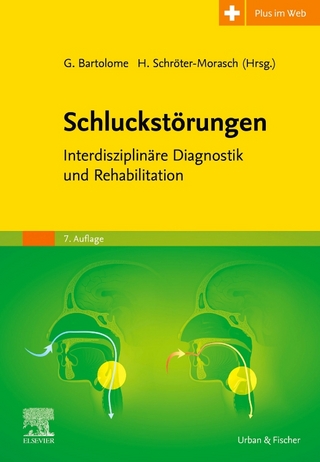
The Deaf Child in a Hearing Family
Plural Publishing Inc (Verlag)
978-1-59756-394-9 (ISBN)
The importance of identifying childhood hearing loss as early as possible cannot be overemphasized. Nor can the importance of speedy and effective intervention designed to minimize both the hearing deficit and its developmental impact. Boothroyd and Gatty's new book is based on the assumption that the parents are hearing and that spoken-language competence has been established as a goal. Divided into six parts, the authors first summarize basic information on sound, hearing, hearing loss, language, speech, speech perception, and child development. For some readers, this will be a review of information already covered. For others it will serve as an introduction. Either way, it provides a background from which to draw implications about the management of hearing loss. The authors then move on to deal with sensory aspects of management, including information on hearing aids, cochlear implants, assistive listening devices, room acoustics, and lipreading. The assumption is that a first step in management is to optimize and capitalize on hearing when it is present and provide supplements when it is not.The third part deals with steps that can be taken to enrich the child's learning environment.
The task of the child is learning; the task of those who interact with the child is to provide enriched environments and experiences that will facilitate and speed learning. Some of this enrichment may occur in clinical settings, some in day-care or preschool settings, and some, perhaps most, in the home. A section on social-emotional issues addresses the reactions of parents to the discovery that their child has a hearing loss, and the promotion of social-emotional development of the child, focusing on the need to avoid overemphasis on attainment at the expense of affiliation. The penultimate part deals with assessment - both formal and informal. The authors' position is that the creation of an optimal learning environment depends on knowledge and awareness of the child's capacities, abilities, and performance. This information, they assert, is essential for planning an effective, individualized program, for monitoring progress and adapting strategies, and for assessing outcome.The final part brings all the aforementioned topics together and discusses the needs for comprehensive intervention programs and intervention teams.
For audiologists in clinic, for school-based audiologists and speech-language pathologists, and for special educators, the wisdom and many years experience shared here make this book an essential and practical guide to the effective management of hearing loss in children.
Arthur Boothroyd, PhD, is Distinguished Professor Emeritus at the City University of New York; Scholar in Residence at San Diego State University; and Distinguished Visiting Scientist at the House Ear Institute in Los Angeles. Born in England, he obtained a degree in physics from the University of Kingston on Hull in 1957. After a year in electronics research and four years as a high school physics teacher, he became interested in deafness as a result of having a deaf son. In 1962 he took a research fellowship in the Department of Audiology and Education of the Deaf at the University of Manchester, where, following two years of research on earmold design and acoustic feedback in hearing aids, he was hired as an Assistant Professor of Audiology. In 1969 he was awarded the Ph.D. degree for his research on speech perception and hearing aid fitting in hearing-impaired children. Soon after, he moved to the United States and for 13 years, served as Director of Research and Clinical Services at the Clarke School for the Deaf in Northampton, Massachusetts. While there, he and Dr. Janice Gatty collaborated on the creation of a preschool program for children with hearing loss. In 1981, he joined the faculty of the Doctoral Program in Speech and Hearing Sciences at the City University of New York, eventually attaining the rank of Distinguished Professor. He left that position in 2000 to move to California, where he remains active as a teacher, researcher, and consultant. Dr. Boothroyd has published extensively on the effects of childhood hearing loss on development, with special emphasis on speech perception, its assessment, and its enhancement with hearing aids, cochlear implants, and tactile aids. Janice Gatty, EdM, MED, EdD, has Masters degrees in Early Childhood Education and Education of the Deaf and a Doctorate in Human Development. She has been at the Clarke School for the Deaf in Northampton, Massachusetts, since 1974 and on the faculty at Smith College since 1977. Currently, she teaches undergraduate courses in child and adolescent growth and development and courses in early development of deaf and hard-of-hearing children and their families in the Graduate School of Education. She is Director of the Family Center at the Clarke School for the Deaf that houses an Audiological Clinic, an Early Intervention and Integrated Preschool Program, and a Comprehensive Educational Evaluation Program.
Preface Part 1. Hearing Loss and Child Development Hearing and Sound The Sounds of Speech Hearing Mechanisms and Hearing Processes Hearing and Development Hearing Impairment and Hearing Loss Hearing Tests Hearing Aids and Cochlear Implants Part 2. Management of Hearing Loss in Young Children Hearing Capacity Hearing Skill Spoken Language Socio-Emotional Function Families Appendix A. Laws Appendix B. SPLograms Appendix C. FM Amplification and Infants Appendix D. Formal Tests References Index
| Erscheint lt. Verlag | 1.12.2011 |
|---|---|
| Zusatzinfo | b/w illustrations |
| Verlagsort | San Diego |
| Sprache | englisch |
| Maße | 152 x 229 mm |
| Gewicht | 358 g |
| Themenwelt | Medizin / Pharmazie ► Gesundheitsfachberufe ► Logopädie |
| Medizin / Pharmazie ► Medizinische Fachgebiete ► HNO-Heilkunde | |
| Medizin / Pharmazie ► Medizinische Fachgebiete ► Pädiatrie | |
| Sozialwissenschaften ► Pädagogik | |
| Sozialwissenschaften ► Politik / Verwaltung ► Staat / Verwaltung | |
| Sozialwissenschaften ► Soziologie | |
| ISBN-10 | 1-59756-394-3 / 1597563943 |
| ISBN-13 | 978-1-59756-394-9 / 9781597563949 |
| Zustand | Neuware |
| Haben Sie eine Frage zum Produkt? |
aus dem Bereich


